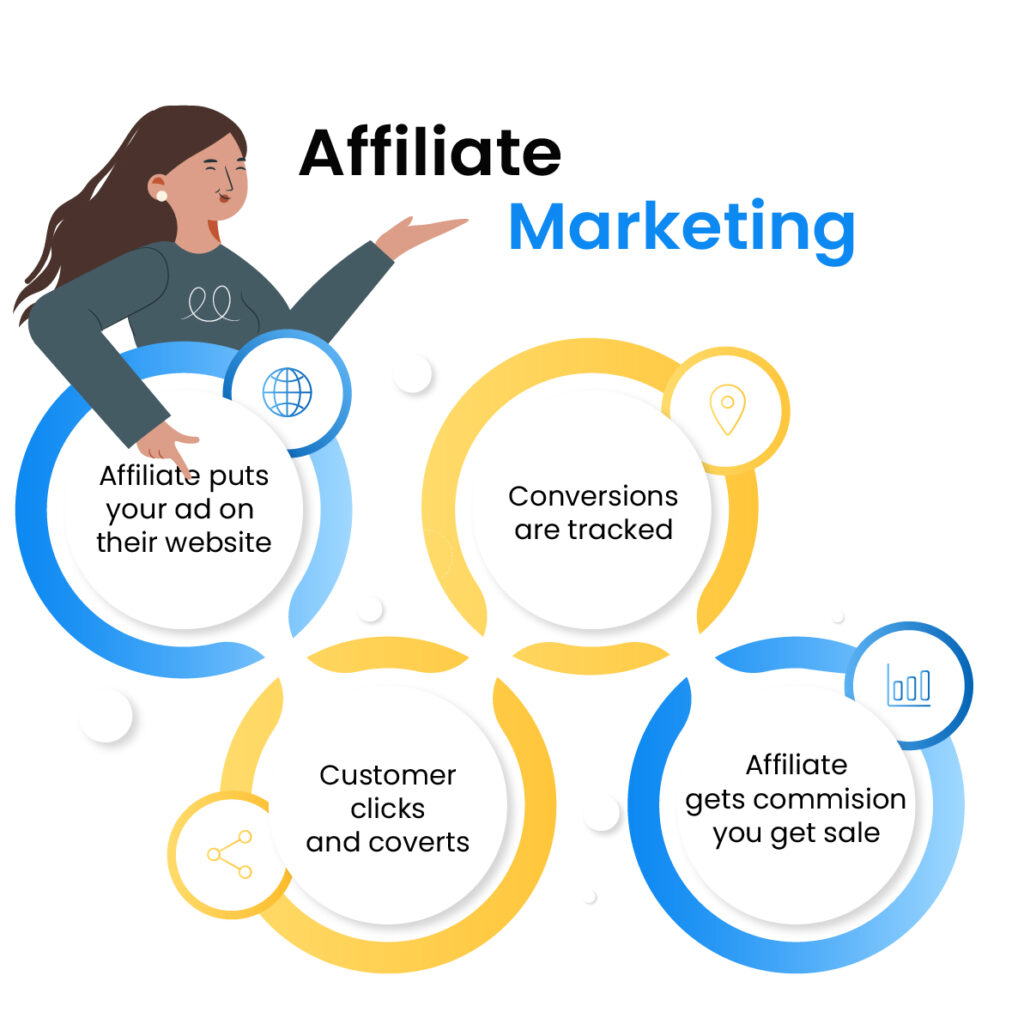Suppose you have been looking into “pandemic-friendly” ways of earning more money. If so, chances are you have already heard the terms affiliate marketing and dropshipping being thrown around. And if you checked forums or articles focused on affiliate marketing, you have probably seen discussions comparing affiliate marketing and dropshipping.
Which one is better to start out with? Which is easier? And which one brings in more money? We’ll try to answer these questions today. In this article, we’ll be putting affiliate marketing vs. dropshipping head to head – comparing the advantages and downsides of both. Which one will win?
The similarities of affiliate marketing and dropshipping
Let’s start with the similarities. First, both affiliate marketing and dropshipping are a little bit misunderstood. Because they can be started straight away and the risks involved are pretty low, they are often seen as “fast money” schemes. Many people start affiliate marketing or a dropshipping business hoping that they can ditch their tedious 9-5 jobs with little effort.
Sadly, that’s not how it works. For both affiliate marketing and dropshipping businesses, there’s work to be done upfront. This involves setting up a website, picking merchants or affiliate programs, creating content, and building up a customer/follower base. You need to invest time and effort into both ventures before you’ll start seeing the results of your work, especially if you’re starting from scratch.

However, there is an advantage to both. You can easily center them around your hobbies or interests by promoting products you like and want others to try out.
The similarities:
- In both models, your primary responsibility is promoting a product (or service, in the case of affiliate marketing).
- They are low-risk businesses as you don’t need to order products in advance or pay for inventory storage.
- There’s no actual limit to how much you can earn.
- You can run the business independently.
- Both require similar skills like writing good copy, researching keywords, driving traffic to your site, etc.
What are the differences between affiliate marketing and dropshipping?
The main difference is how you earn money. Affiliates work for commissions that are a percentage of revenue from the sales they generate.
With dropshipping, your commission is the difference between a product’s manufacturing costs and the price you sell it for.
The affiliate commission rate is usually fixed, whereas with dropshipping you are free to set the price yourself. Because of this, it might seem like dropshipping is the more profitable of the two.
However, there are some starting costs involved with dropshipping. These include building and hosting a website, listing and sales fees if you are using platforms such as eBay or Amazon, plus ad payments. Some companies might also ask for drop shipping fees. You also need to factor in that all refunds or returns will be paid for from your pocket. Meanwhile, for affiliate marketing, you don’t need a website per se- a video channel or social media account is enough to get you started.
What else sets these two models apart? Let’s look at both of them in detail.
What is dropshipping?
In the simplest terms, a drop shipping business allows you to sell products without ordering the products in advance and paying for storage fees. Instead, you only order products from the manufacturer once a customer orders (and pays for) them via your website.
You don’t have to worry about shipping costs either – production, packaging, and delivery are taken care of by the manufacturer. Your primary responsibility is to promote the products, pass orders on to the manufacturer, and take care of customer support.
If you want to start your first online shop but without most of the risks associated with typical stores or are on a low budget, dropshipping may be for you. If you are a creator or artist, then dropshipping might be an excellent way for you to offer custom-made merchandise for your fans as well.
Pros of dropshipping:
- Easier to manage than a typical online store.
- You only pay for a product once an order has been placed, so there’s no risk of unsold products.
- You set the end price.
- You can build your brand with custom products.
Cons of dropshipping:
- Customer service and support are your responsibility – if the end product is of poor quality, you have to take care of complaints and refunds.
- You have no control over the quality of the product or delivery.
- The dropshipping market is very competitive, so you need to spend some time analyzing your competitors and their prices.
- When starting from scratch, it will take a while for you to build a customer base.
Before starting a dropshipping store, the main thing you need to do is to carefully examine the quality of the products you want to sell. This is essential when you sell custom-made merchandise.
You’ll have little control over how the product is packaged and delivered to your customers. That’s why, in order to avoid any unpleasant surprises, it’s best to first order and try the products yourself before you start promoting them.

What is affiliate marketing?
Affiliate marketing is a way for you to earn money by recommending products or services online – especially if you already have a blog or a video channel that’s popular. The process is very simple. You join a partnership program of a company from your industry or niche to promote their products on your social channels. After someone buys the product advertised on your blog or video channel by clicking a unique affiliate link, you receive a commission.

There are 11,400 different affiliate programs from all types of industries in the US alone, so you will easily find one related to your blog or channel topic. Plus, by recommending products to your followers through reviews or tutorials, you can build a reputation as a reliable source of information.
Pros of affiliate marketing:
- You can start affiliate marketing activities for free.
- Every industry has an affiliate program nowadays, so you have plenty to choose from.
- It can be a great way to earn passive income.
- Affiliate links can be used in many ways, from a blog to YouTube and social media.
- Through product comparisons, reviews, or tutorials, you can build a reputation as an expert in your niche.
Cons of affiliate marketing:
- For physical products, the commission is usually pretty low and can change without warning.
- You don’t get paid immediately.
- As with dropshipping, competition in the industry is fierce and it’s going to take time until you’ll start seeing results.
Affiliate marketing vs. dropshipping – comparison table
| Dropshipping | Affiliate marketing | |
| Basics | You take orders from your online store and then pass them on to the manufacturer. | You recommend products to other people through your blog, social media channels, or video platform. |
| How do you earn money? | You set drop shipping fees for each product you sell, plus a product margin. | You earn a percentage of the sale price of the promoted products for each item you sell. |
| When do you earn money? | When the customer orders a product from your site and you pass the order to the manufacturer. | When a potential customer clicks on an affiliate link on your site and purchases a product. |
| Main responsibilities | Promoting products, passing orders on to the merchant, and sometimes also customer support. | Promoting products, building relationships with your audience, tracking performance metrics. |
| Startup costs | Setting up the website, advertisements. | None. |
| Pros | Low financial risk, you can set the product price as high as you wish, a good way to promote your own art or designs. | A large number of programs to enter. If you have a blog or website with a stable audience, you can use it to start earning commissions. |
| Cons | Risk of selling poor quality products (and dealing with angry customers) if you don’t vet manufacturers in advance. Building a customer base and starting to earn regular income might take longer. | The commission is usually fixed and might change without warning. You aren’t paid immediately like with drop shipping but instead, once a month or once you pass a certain threshold (such as $200). |

So, which one is the better choice?
Saying which of the two is the clear winner is pretty tricky – it mostly depends on your preferences and expectations. For many people, affiliate marketing is the better option. While you have to work on creating quality content, you can start earning money passively after a while. And if you have a stable following already, be it on social media or YouTube, you can start promoting products immediately.
Dropshipping requires a bit more work. Besides creating content, you also need to manage the store and take care of customer service. You have the freedom to decide the end price of the product though, so your earnings can potentially be visibly greater than with affiliate marketing. For many, this is the biggest benefit. However, you need to analyze competitors’ prices carefully. With so many similar stores on the market, massively increasing the price of a product would be a recipe for failure.
Conclusion
Both drop shipping and affiliate marketing are fantastic ideas for earning extra income in 2025. What’s more, neither carries the risks associated with typical online businesses. There is some work up front, but you can reap the benefits once everything is set up. Plus, whichever you choose, you will have the comfort to work from your home or wherever you wish. What could be better?
Share this article







